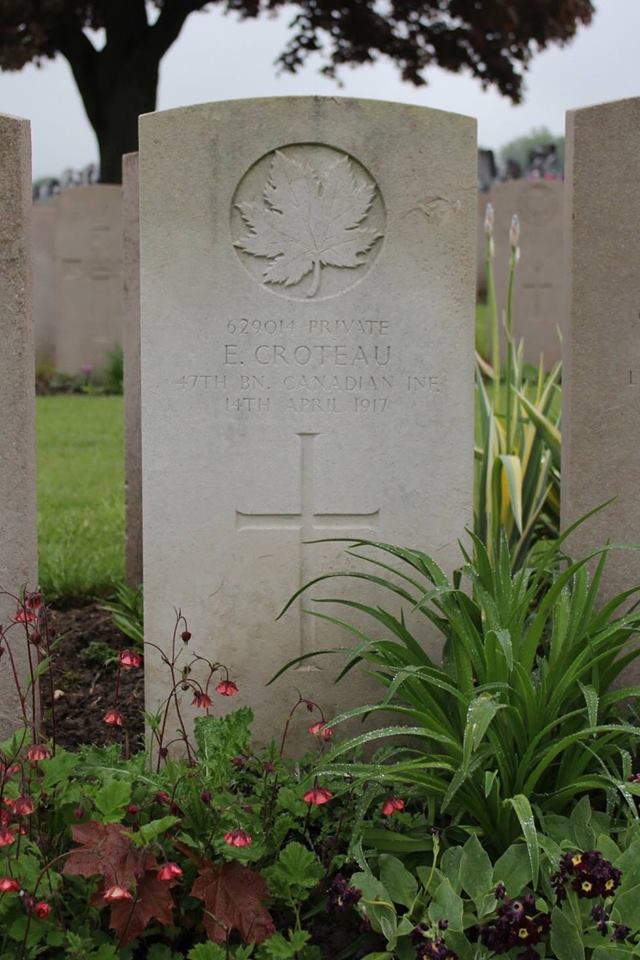This week we mark 100 years since the Battle of Vimy Ridge.
Canadian soldiers played a defining role the famous First World War battle, which took place from April 9 to 12, 1917, by taking the ridge at great cost from the German Imperial Army. More than 3,500 Canadians were killed at the battle, which has become part of our country’s patriotic narrative as a defining moment in our nation’s history.
My great grand uncle, Private Edmond Croteau (photo above), fought in and died from wounds received in the Battle of Vimy Ridge.
Born in Saint-Sylvestre in October 1880, he left Quebec as a young man and traveled west to the Yukon during the height of the Klondike Gold Rush. When the gold rush died out, he moved south, settling in Maillardville, which is part of present-day Coquitlam. He enlisted in the Canadian Army in New Westminster in June 1915. He initially served with the 104th Regiment Westminster Fusiliers of Canada and later with the 47th Battalion of the Canadian Expeditionary Force, who he served with at Vimy Ridge.
Private Edmond Croteau was seriously wounded on April 11, 1917, during the successful attempt by Canadian forces to take Hill 120 (also known as The Pimple), a fortified point at the northernmost point of Vimy Ridge. He died on April 14, 1917 at the No. 6 Casualty Clearing Station. He was 36 years old.
He was buried at the Barlin Communal Cemetery Extension, Pas de Calais, France.



